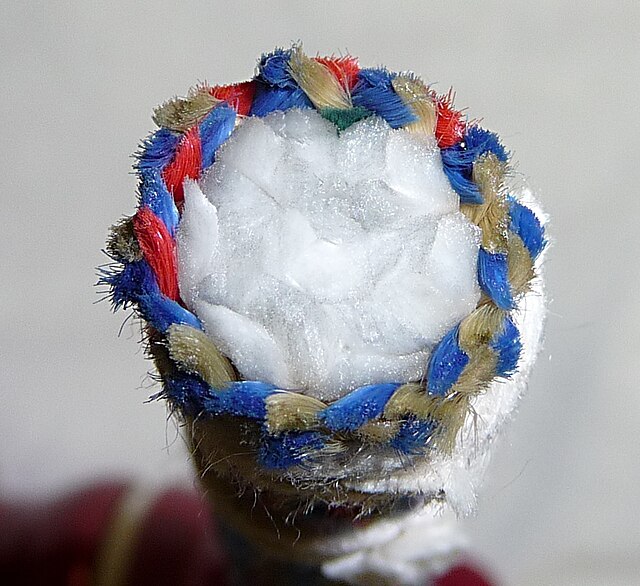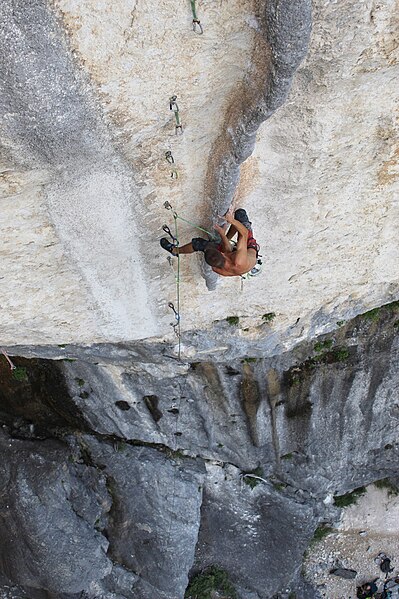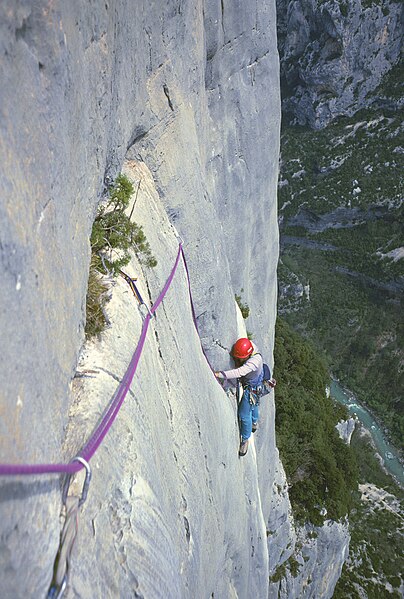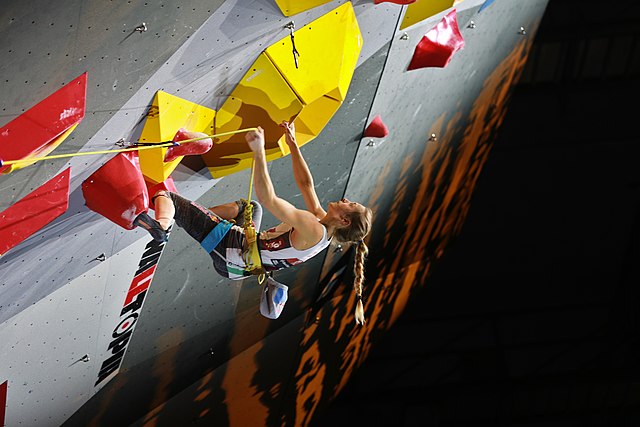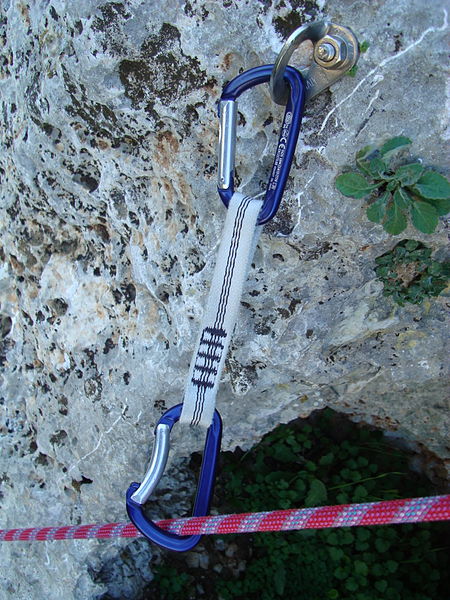Rock-climbing equipment varies with the type of climbing undertaken. Bouldering needs the least equipment outside of shoes and chalk and optional crash pads. Sport climbing adds ropes, harnesses, belay devices, and quickdraws to clip into pre-drilled bolts. Traditional climbing adds the need for carrying a "rack" of temporary passive and active protection devices. Multi-pitch climbing adds devices to assist in ascending and descending fixed ropes. And finally aid climbing uses unique equipment.
UIAA-certified twin ropes
Cross-section of 10.7 mm kernmantle dynamic rope
Sets of sewn webbing slings
Rope (two on left) and cord (two on right) thicknesses compared
Sport climbing is a type of free climbing in rock climbing where the lead climber clips into pre-drilled permanent bolts for their protection while ascending a route. Sport climbing differs from the riskier traditional climbing where the lead climber has to insert temporary protection equipment while ascending.
Climber leading the sport climbing route Hulkosaure 8b (5.13d). Quickdraws have already been attached to the line of pre-drilled bolts that mark the route.
Climber following up the traverse section of Pichenibule 7b+ (5.12c) in the Verdon Gorge, one of the first-ever bolted sport climbing routes
Jessica Pilz clipping her rope into a pre-bolted quickdraw in the final of the women's lead climbing event at the 2018 World Championships
A rope clipped into a quickdraw clipped to a bolt


